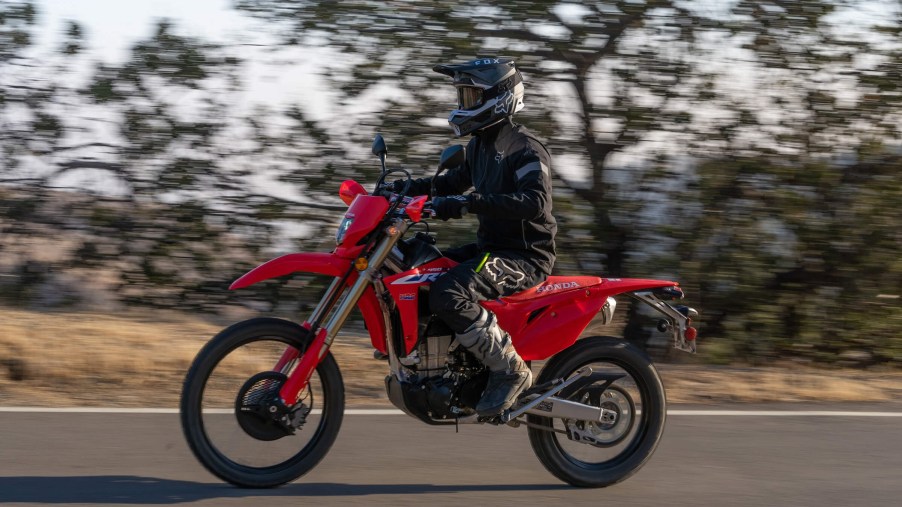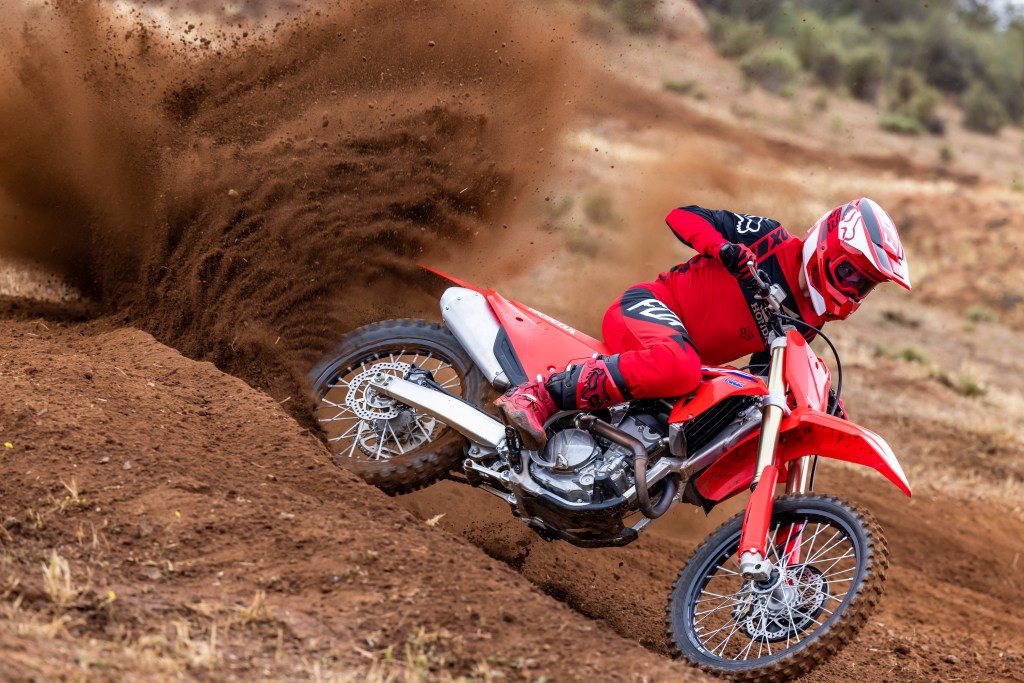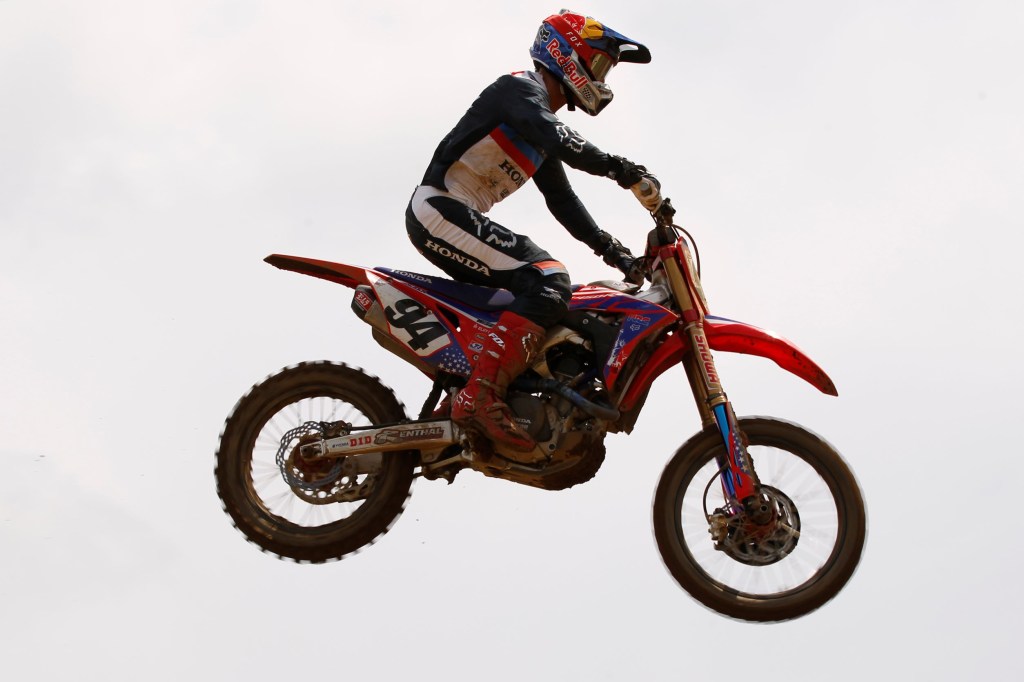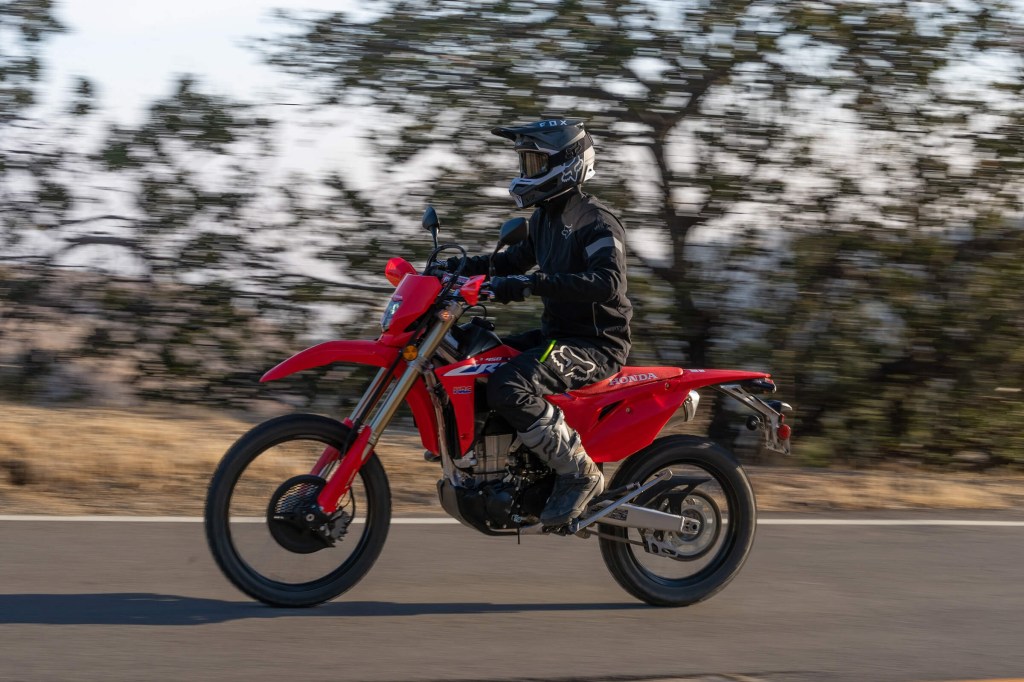
Want to Buy a Dirt Bike? Check if It’s Street-Legal First
While the pandemic helped boost all motorcycle sales in 2021 and 2020, off-road models have seen the biggest growth. And dirt bikes are among the most popular of these off-pavement motorcycles. Especially since they make excellent companions on RV trips to national and state parks. Naturally, though, some riders might want to get more mileage out of their machines and start hitting some paved paths, er, roads. And if you’re one of them, unless you want to deal with some unpleasant consequences, make sure your dirt bike is street-legal first.
There’s more than one kind of dirt bike

First, before tackling street-legal status, it’s important to know that all not dirt bikes are created equal. And we’re not talking about things like engine capacity, two-stroke vs. four-stroke, or gasoline vs. electric. No, it’s that ‘dirt bike’ technically refers to an entire family of off-road motorcycles, Cycle World explains.
While there are several kinds of motorcycles that can go off-road, dirt bikes are the most off-road-focused ones. However, that doesn’t mean all dirt bikes are equally good at all activities. Think of them as knives, CW says. One motorcycle is like a steak knife, while another is more like a cleaver: they’re both knives, but they’re built for different tasks.
All dirt bikes follow the same basic formula: long-travel suspension, knobby tires, lightweight frame, and one- or two-cylinder engine. These features make them easy to maneuver around off-road trails, hence why models like the Honda CRF250F are often called ‘trail bikes.’

Trail bikes, though, aren’t as extreme as motocross motorcycles. These are full-on racing machines, with even lighter frames, more suspension travel, grippier tires, and high-strung engines. For example, the Honda CRF250R is 36 pounds lighter than the CRF250F and has bigger brakes and roughly 50% more front suspension travel.
Enduro motorcycles are dirt bikes, too, and like motocross bikes, they’re designed for racing. But while motocross racing features short courses with plenty of jumps, enduro racing takes place over long distances in open, varied terrain. As a result, enduro motorcycles are beefier than trail or motocross bikes, RideApart explains, and often have bigger engines. Plus, they pack bigger gas tanks and additional protection, such as skid plates and handguards, as well as different suspension geometry. Case in point, the Honda CRF250X is nine pounds heavier than the CRF250F, but it can carry more fuel, has wider and thicker tires, and packs a sidestand.
Not all dirt bikes—enduro motorcycles included—are street-legal

Some confuse enduro motorcycles with dual-sports and supermotos, RideApart says. However, while they have some similarities—long-travel suspension, thin body shape—they’re not identical. For one, while supermotos resemble enduros, they’re high-performance road bikes. And two, while the latter two are street-legal bikes, not all enduro motorcycles are.
That statement applies to all dirt bikes, whether they’re trail, enduro, or motocross models. Admittedly, because motocross bikes compete on closed, specially-designed tracks, there’s no need for them to ever be street-legal. And because two-stroke engines are still viable in motocross, it’s unlikely any of these bikes would ever pass emissions.
However, some enduro courses included sections on paved roads. As a result, street legality is sometimes a requirement, RevZilla points out. Plus, while trail bikes are designed for off-road trails, you might have to ride on public roads to get to those trails. So, some models, like the Honda CRF450L, include concessions to street regulations.
But what makes one dirt bike a-okay to ride on the road and another illegal? Firstly, its powertrain has to pass EPA testing, and if the brand wants to sell it in California, CARB testing. Hence, it needs a catalytic converter and an exhaust that isn’t obnoxiously (and illegally) loud. Secondly, the dirt bike needs to have things like a headlight, taillight, brake light, horn, and a rear license plate mount with lights. Plus, mirrors, turn signals, and DOT-approved tires.
What happens if you ride a non-street-legal off-road bike on the road?
You can modify an ‘off-highway’ trail or enduro dirt bike so it’s street-legal. However, making a non-road-legal dirt bike street-legal may also involve upgrading the charging system, changing the gear ratios, and, depending on your state’s DOT, installing an odometer, Dirt Legal says. That’s on top of installing the other equipment, performing emissions testing, and filling out all the paperwork.
If that sounds like a lot of work, you might want to seek out a qualified shop. Or, if you’re shopping around for a new or used bike, consider taking a dual-sport like the Kawasaki KLR650 out for a test ride. A lightweight adventure bike like the Royal Enfield Himalayan can be another solid alternative.
What you don’t want to do is take your not-street-legal dirt bike out on the street. For one, you’ll annoy residents and other road users. Plus, local authorities can seize and crush your ride. And besides the emissions issues, it’s worth remembering that these bikes don’t have lights, mirrors, or signals. That makes them considerably more dangerous to ride on public roads.
So, before getting a dirt bike to ride on- and off-road, make sure it can do both first.
Follow more updates from MotorBiscuit on our Facebook page.


